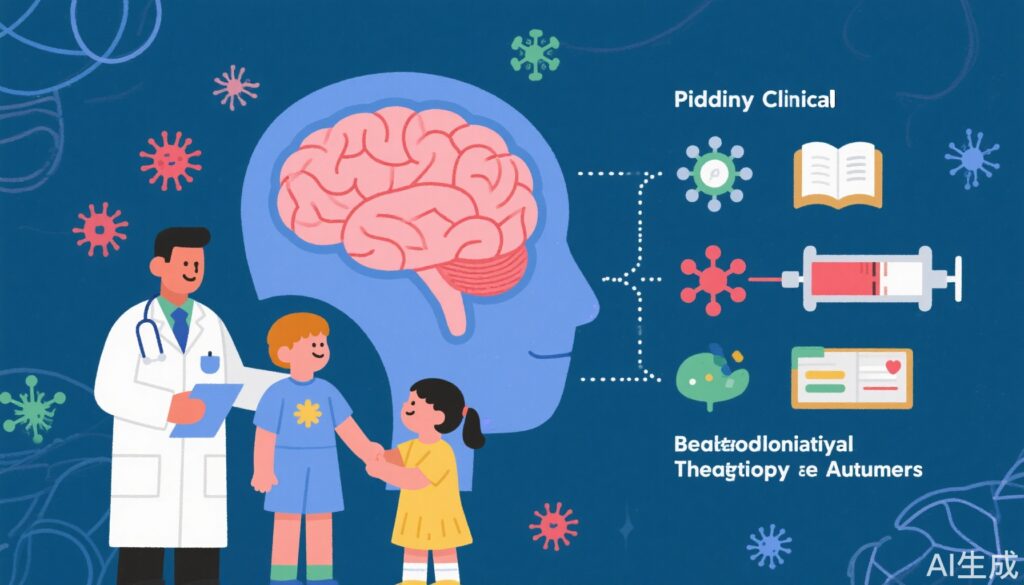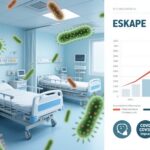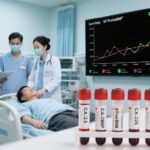Highlights
- Intrathecal autologous bone marrow mononuclear cell (BMMNC) therapy combined with education improved core ASD symptoms and adaptive functioning compared to education alone.
- Significant reductions in the severity of ASD were observed at 12 months, with greater improvements in social, adaptive, and daily living skills.
- The study adds to emerging evidence for cell-based therapies as adjuncts to standard behavioral interventions in pediatric ASD.
Study Background and Disease Burden
Autism spectrum disorder (ASD) is a neurodevelopmental condition characterized by deficits in social interaction, communication, and restricted, repetitive behaviors. Prevalence continues to rise globally, with significant individual, familial, and societal impacts. Current mainstay therapies are behavioral and educational interventions, which, while effective for many, often leave core symptoms incompletely addressed. There is a growing unmet need for biological therapies that can target underlying neurodevelopmental mechanisms and provide synergistic benefits alongside educational support.
Cell-based therapies, particularly those utilizing autologous bone marrow mononuclear cells (BMMNCs), have gained attention due to their potential neuroprotective, immunomodulatory, and regenerative effects. However, robust clinical evidence for their efficacy in ASD has been limited.
Study Design
This phase II randomized, open-label, controlled trial (clinicaltrials.gov: NCT05307536) was conducted to evaluate the efficacy and safety of intrathecal BMMNC administration combined with educational intervention, compared with education alone, in children with ASD.
A total of 54 children aged 3–7 years diagnosed with ASD per DSM-5 criteria were randomized to:
- Cell therapy (CT) group: Two intrathecal infusions of autologous BMMNCs, six months apart, plus structured educational intervention.
- Control group: Educational intervention only.
Fifty participants (25 per group) completed the 12-month study. Efficacy was assessed at baseline, 2, 6, and 12 months using standardized instruments:
- ASD severity: DSM-5 classification, Childhood Autism Rating Scale (CARS), Clinical Global Impression-Severity (CGI-S)
- Adaptive and social function: Vineland Adaptive Behavior Scales, Second Edition (VABS-II), Clinical Global Impression-Improvement (CGI-I)
Key Findings
At 12 months, the combined BMMNC plus education group demonstrated substantially greater benefits than education alone, as summarized below:
| Outcome Measure | CT Group | Control Group | p-value |
|---|---|---|---|
| Reduction in most severe DSM-5 classification | 48.0% | 8.0% | 0.004 |
| CARS score change | -5.9 points | -1.5 points | <0.0001 |
| CGI-S score change | -1.5 points | -0.1 points | <0.0001 |
| VABS-II score change | +8.5 points | +1.4 points | <0.0001 |
| CGI-I score improvement | 2.8 → 2.0 | 3.0 → 3.5 (worse) | <0.0001 |
These results indicate that the addition of BMMNC therapy led to:
- Nearly six-fold greater reduction in the proportion of children with the most severe ASD symptoms (DSM-5 severity level).
- Marked improvements in overall ASD severity (CARS, CGI-S).
- Significant gains in adaptive behavior and daily living skills (VABS-II).
- More children showing global clinical improvement (CGI-I) in the CT group, while the control group had worsening scores.
No serious adverse events were reported. Minor procedure-related discomfort was noted but resolved without sequelae.
Expert Commentary
This well-powered phase II randomized trial provides some of the most compelling evidence to date for the potential additive value of intrathecal autologous BMMNC therapy in ASD. The magnitude of improvement in both core symptoms and adaptive functioning is noteworthy, especially given the relatively short follow-up and the young age of participants—a period of high neuroplasticity.
The plausible mechanisms underlying these effects may include modulation of neuroinflammation, enhancement of synaptic plasticity, and support of neural repair pathways. However, rigorous mechanistic studies in human ASD are still lacking.
Limitations include the open-label design, relatively small sample size, and single-center setting—all of which may introduce biases or limit generalizability. Longer-term safety and durability of the effects remain to be established. The use of standardized, blinded behavioral raters and a multi-site design would strengthen future research.
Notably, current ASD management guidelines recognize behavioral interventions as standard of care but do not yet endorse cell-based therapies outside of research settings. The present findings, if replicated and validated in larger phase III trials, could prompt a re-evaluation of therapeutic options for severe pediatric ASD.
Conclusion
For children with ASD, combining intrathecal autologous BMMNC therapy with educational intervention led to significant improvements in symptom severity and adaptive behaviors compared to education alone over 12 months. While this study signals a potential paradigm shift, replication, longer follow-up, and further safety assessments are critical before clinical adoption. The trial highlights the importance of integrating innovative biological and behavioral strategies to address the complex needs of children with ASD.
References
1. Nguyen LT, Nguyen PM, Nguyen HP, Bui HT, Dao LTM, Van Pham M, Hoang CK, Nguyen PT, Nguyen TTP, Nguyen ATP, Hoang VT, Bui HTP, Vuong NK, Van Ngo D. Outcomes of autologous bone marrow mononuclear cell administration combined with educational intervention in the treatment of autism spectrum disorder: a randomized, open-label, controlled phase II clinical trial. Stem Cell Res Ther. 2025 May 30;16(1):268. doi: 10.1186/s13287-025-04404-4. PMID: 40442857; PMCID: PMC12123819.
2. Dawson G, et al. Early behavioral intervention is associated with normalized brain activity in young children with autism. J Am Acad Child Adolesc Psychiatry. 2012;51(11):1150-1159.
3. Chez MG, et al. Safety and observations in a phase I trial of cord blood mononuclear cells in children with autism spectrum disorder. Stem Cells Transl Med. 2018;7(2):210-222.
4. Lord C, et al. Autism spectrum disorder. Lancet. 2020;392(10146):508-520.



